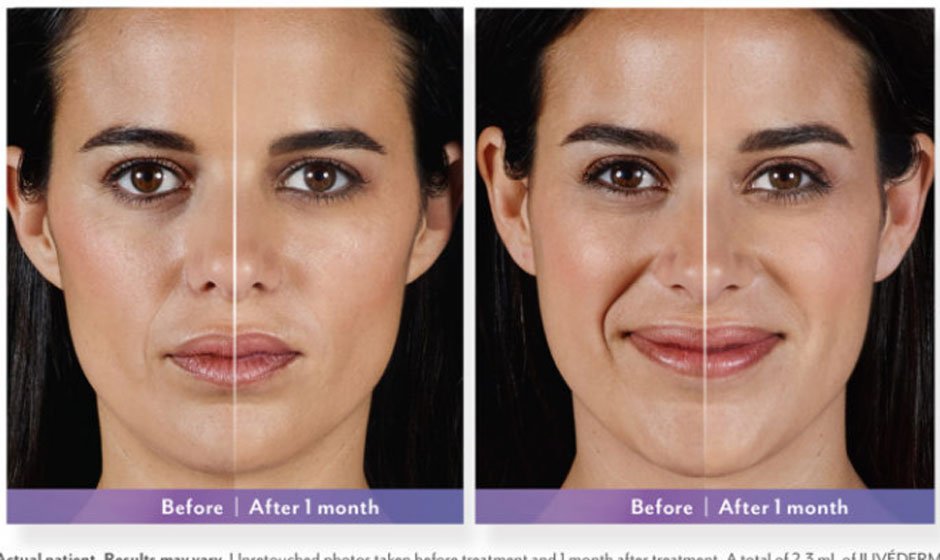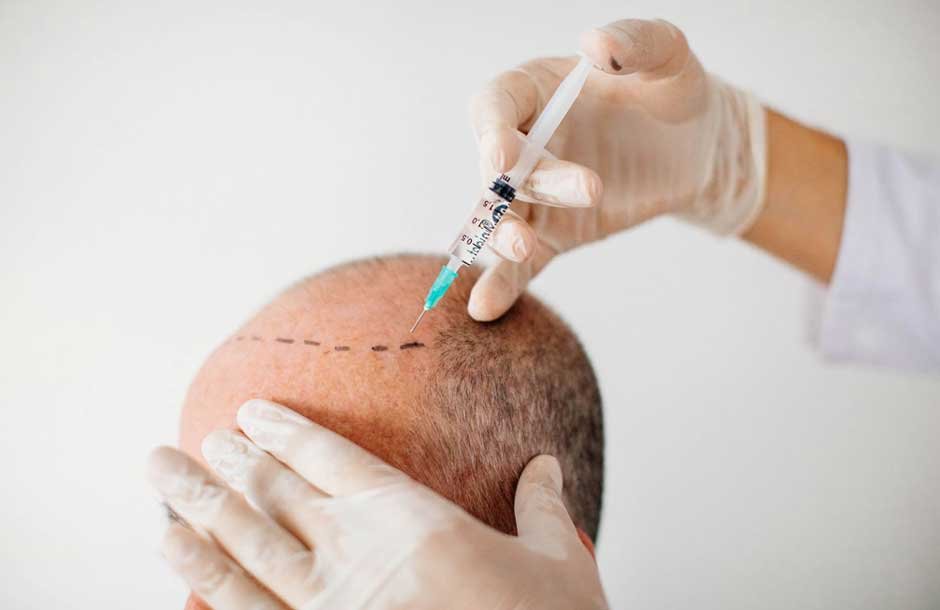How Much Do Dermal Fillers Cost?

Dermal filler injections belong to the most popular aesthetic procedures these days. With their help, thousands of people worldwide maintain their attractive and youthful appearance for a substantial time period.
But how much do dermal fillers cost? What brands are the most affordable? And what factors affect the average cost of dermal fillers? Check out this article to find the answer to all these questions before undergoing the procedure of dermal filler administration!
What Are Dermal Fillers?
Dermal fillers are minimally invasive treatments used in the field of aesthetic medicine. They effectively restore the body’s natural collagen levels and, therefore, improve the overall condition of a patient’s skin in a quick, easy, and effective way.
The main aim of dermal filler treatments is to enhance and rejuvenate the appearance of a patient. More precisely, they are oftentimes used to:
- Reduce facial wrinkles (including nasolabial folds, crow’s feet, marionette lines, and other skin imperfections);
- Augment lips and improve their shape;
- Enhance facial contour;
- Tighten the sagging skin;
- Improve the skin texture;
- And so on.
WORTH KNOWING:
Depending on their primary indications, facial fillers might be divided into lip filler, cheek filler, and other dermal filler solutions. While some facial fillers are universal and might be injected into different parts of the face, others have a narrow spectrum of action (for instance, a lip filler is primarily designed for lip augmentation).
What Types of Dermal Fillers Are There?
Depending on the main active ingredient in their composition, dermal filler treatments might be divided into the following types:
- Hyaluronic acid fillers;
- Calcium-hydroxylapatite fillers;
- Poly-L-lactic acid fillers;
- And so on.
WORTH KNOWING:
Due to the fact that dermal fillers belong to products intended for professional usage, it is usually the task of a healthcare provider to define what type of dermal filler treatment is going to meet a patient’s needs best. While some patients respond to hyaluronic treatment in the most beneficial manner, others might achieve better results with poly-L-lactic treatment.
Hyaluronic Acid Fillers
Dermal fillers based on hyaluronic acid are probably the most widely-spread treatments offered by the world of aesthetic medicine these days. In most cases, they are based on synthetic hyaluronic acid, which effectively compensates for the naturally-occurring hyaluronic acid, the levels of which drop as a person gets older.
One of the greatest benefits of hyaluronic acid fillers is their power to attract moisture to skin cells, which eventually leads to their profound hydration. A vast majority of healthcare providers choose hyaluronic acid fillers to smooth wrinkles all over the facial oval, plump thin lips, and improve the overall appearance of a patient’s skin.
Among the main brands that produce dermal fillers based on hyaluronic acid are:
- Belotero (the most popular Belotero products: Belotero Balance, Belotero Intense, Belotero Volume, and so on);
- Juvederm (the most popular Juvederm products: Juvederm Ultra, Juvederm Volbella, Juvederm Vollure, and so on);
- Restylane (the most popular Restylane products: Restylane Defyne, Restylane Kysse, Restylane Silk, and so on).
WORTH KNOWING:
Other brands that manufacture dermal fillers based on hyaluronic acid are Fillmed, Pluryal, Saypha, Teosyal, and many more. While belonging to the group of temporary fillers that ensure instantly visible, natural-looking, and long-lasting results, they function as minimally-invasive substitutions to cosmetic surgery.
Calcium-Hydroxylapatite Fillers
Dermal fillers based on calcium-hydroxylapatite are also quite popular. The main active component in their composition is calcium-hydroxylapatite, which is a naturally-occurring substance that might be found in human bones. It is especially effective when it comes to the acceleration of collagen production in the tissues of the skin.
Due to the dense structure of calcium-hydroxylapatite-based face fillers, they are primarily used to volumize sunken cheeks, tighten sagging skin, and enhance the contour of certain facial parts. Apart from these indications, calcium-hydroxylapatite fillers might also be used to reduce facial wrinkles (starting from nasolabial folds and ending with crow’s feet).
Probably the main brand that produces dermal fillers based on calcium hydroxylapatite is Radiesse. The products in the Radiesse line differ according to their volume (namely, you might come across Radiesse 0.8ml, Radiesse 1ml, and Radiesse 1.5ml). As well, they might either with or without prefilled lidocaine hydrochloride in their composition.
Poly-L-Lactic Acid Fillers
Just like the above-mentioned hyaluronic acid and calcium hydroxylapatite products, dermal fillers based on poly-L-lactic acid are rapidly gaining popularity. While being based on a fully synthetic active ingredient (namely, poly-L-lactic acid), they are nevertheless characterized by complete biocompatibility and do not normally cause any facial swelling.
A fully synthetic structure of poly-L-lactic acid fillers allows them to last longer if compared to other dermal filler injections. Most patients who have undergone the injections of one, two, or more syringes of poly-L-lactic acid fillers claim to experience the desired results for the time period of more than two years (which is why these dermal fillers are sometimes called semi-permanent).
The most well-known brand of dermal fillers based on poly-L-lactic acid is Sculptra. In most cases, it is advertised in a 5ml vial. Still, it is a task of a healthcare provider to define how many syringes of the product a patient would need in order to achieve proven results after the treatment since there exist many factors affecting it.
WORTH KNOWING:
Despite the fact that the three above-mentioned types of dermal fillers are the most popular worldwide, face fillers based on biocompatible microspheres are also extensively used worldwide. The most well-known brand of these aesthetic solutions is Bellafill.
What Is the Average Cost of Dermal Fillers?
It is essential to mention that there is no universal answer to the question of “How much do dermal fillers cost?” The main reason for it is that each dermal filler type has its own price tag. For instance, the poly-L-lactic dermal filler cost might be a little bit higher than the calcium-hydroxylapatite dermal filler cost. While a single filler based on hyaluronic acid might cost even less than both above-mentioned ones.
At the same time, the price tag for a particular product within one category of dermal fillers depends on its brand. For example, the cost of a Juvederm filler might be higher than the cost of a Saypha filler, regardless of the fact that both of them are based on hyaluronic acid. Thus, it is almost impossible to define the average cost of dermal fillers.
WORTH KNOWING:
If you have any questions regarding the price for dermal fillers (for instance, “Are cheap dermal fillers worth it?” or “What is the best dermal filler in regard to its price vs. quality ratio?”), you might raise them during dermal fillers’ consultations with your healthcare provider.
A Bottom Line
All in all, dermal fillers’ prices strongly depend on a number of factors. Therefore, the answer to the question “How much do dermal fillers cost?” might strongly vary depending on the type and brand of the product that is going to be injected. So, the best option to figure out the dermal fillers’ cost is to consult with a healthcare provider before the product’s individual administering.
P.S.
Please remember that only a certified healthcare provider is eligible to inject dermal fillers beneath a patient’s skin. Thus, make sure to find a reliable dermatologist, cosmetologist, or other medical specialist before undergoing the procedure.



